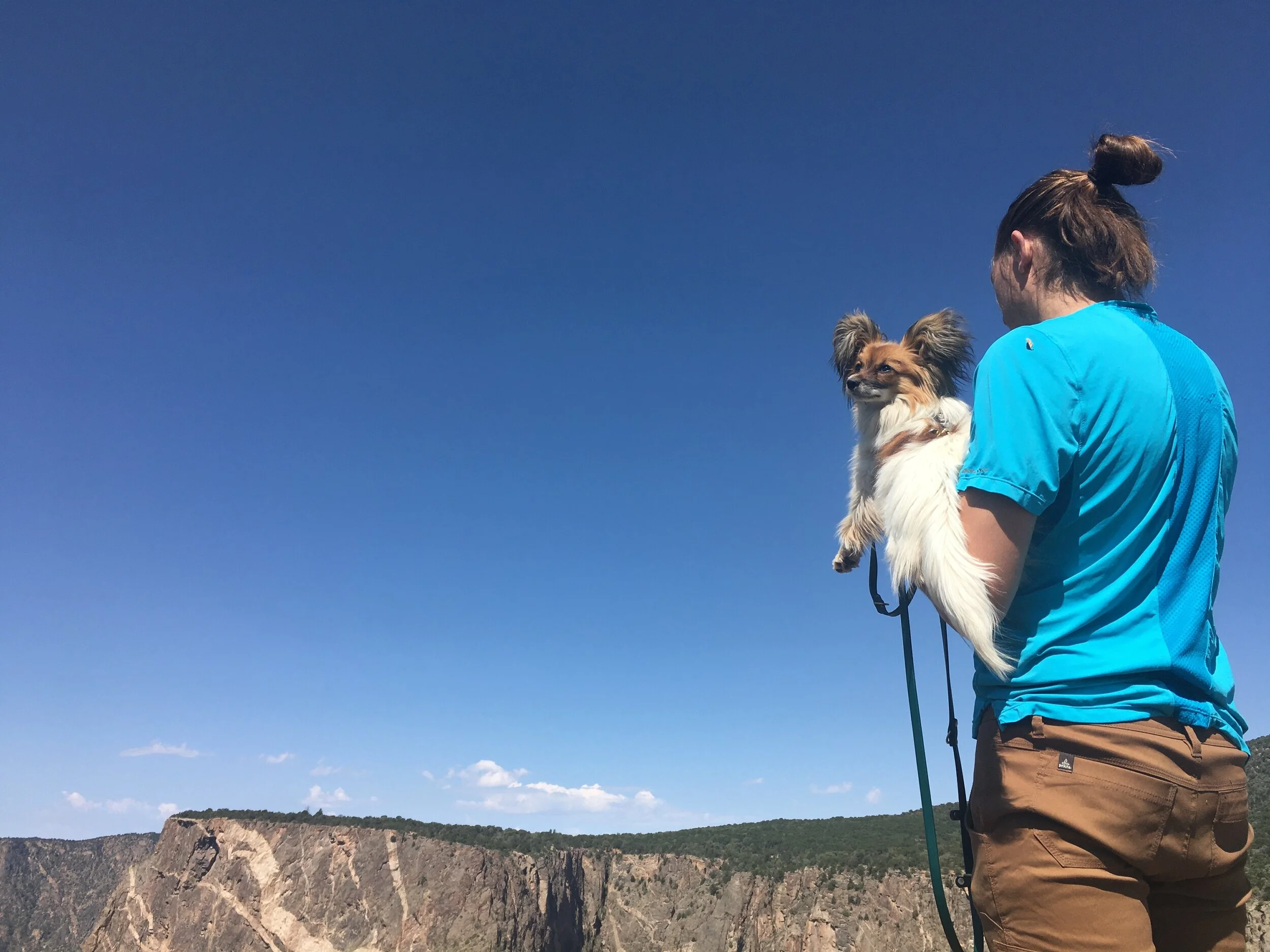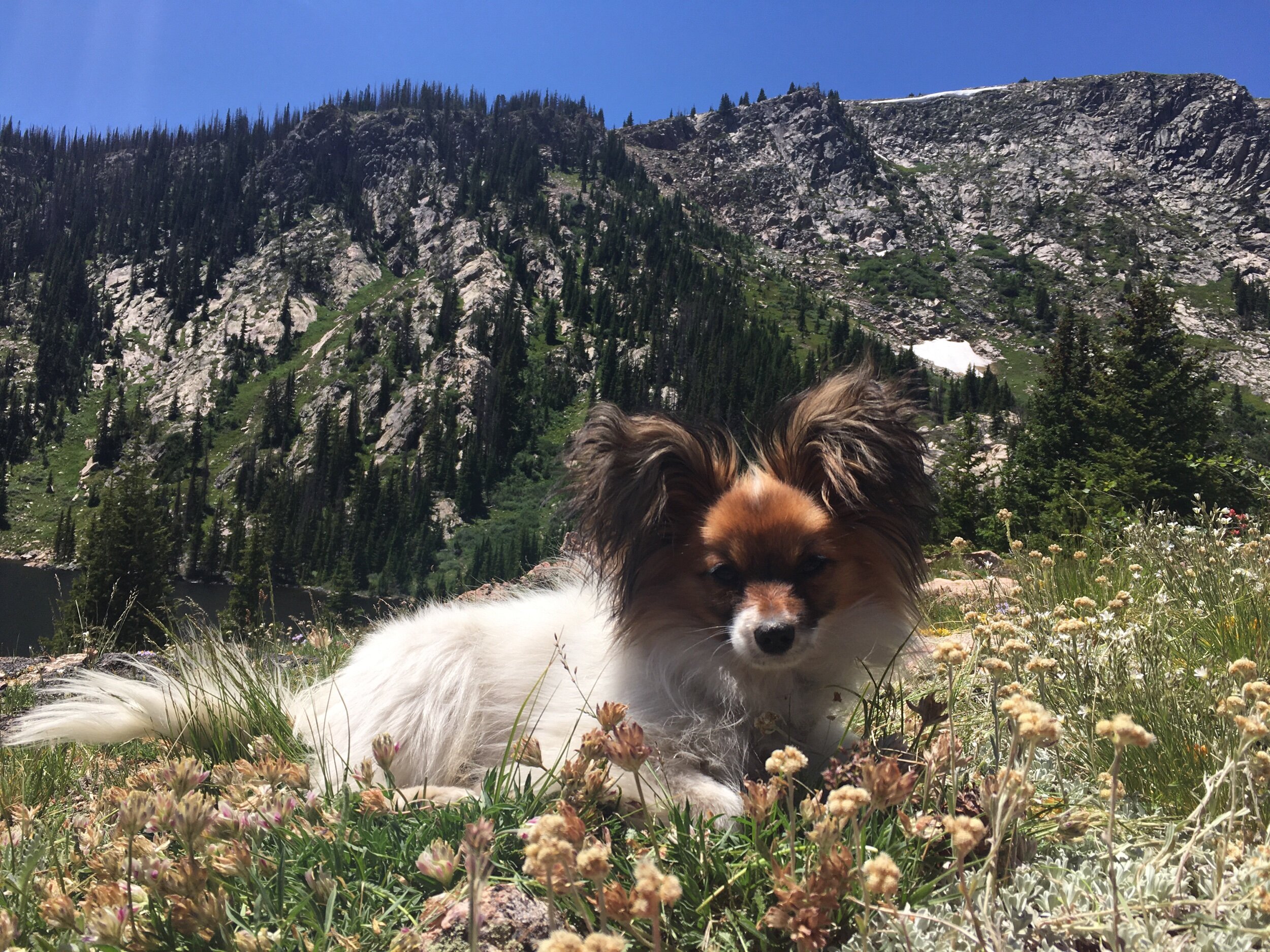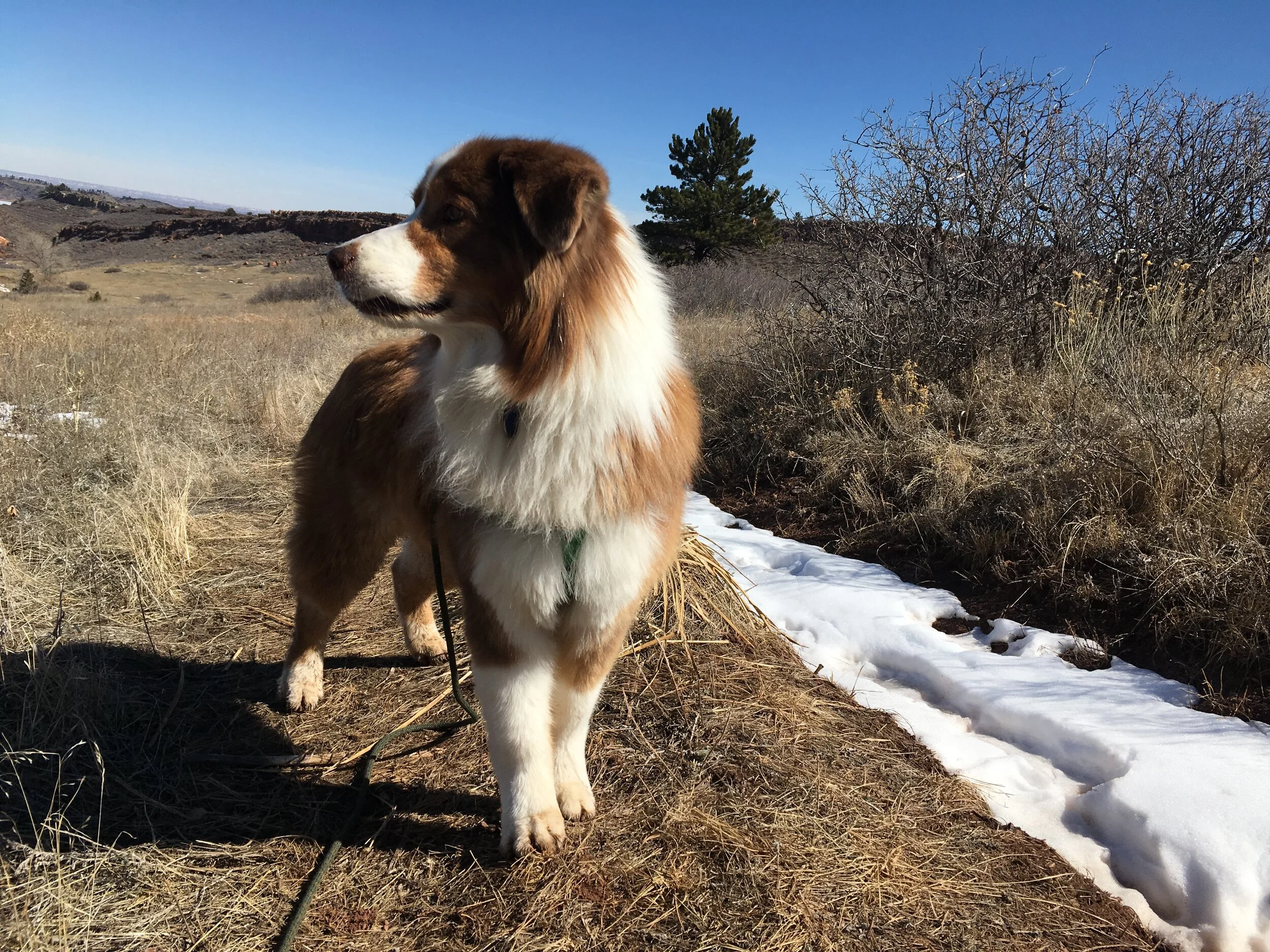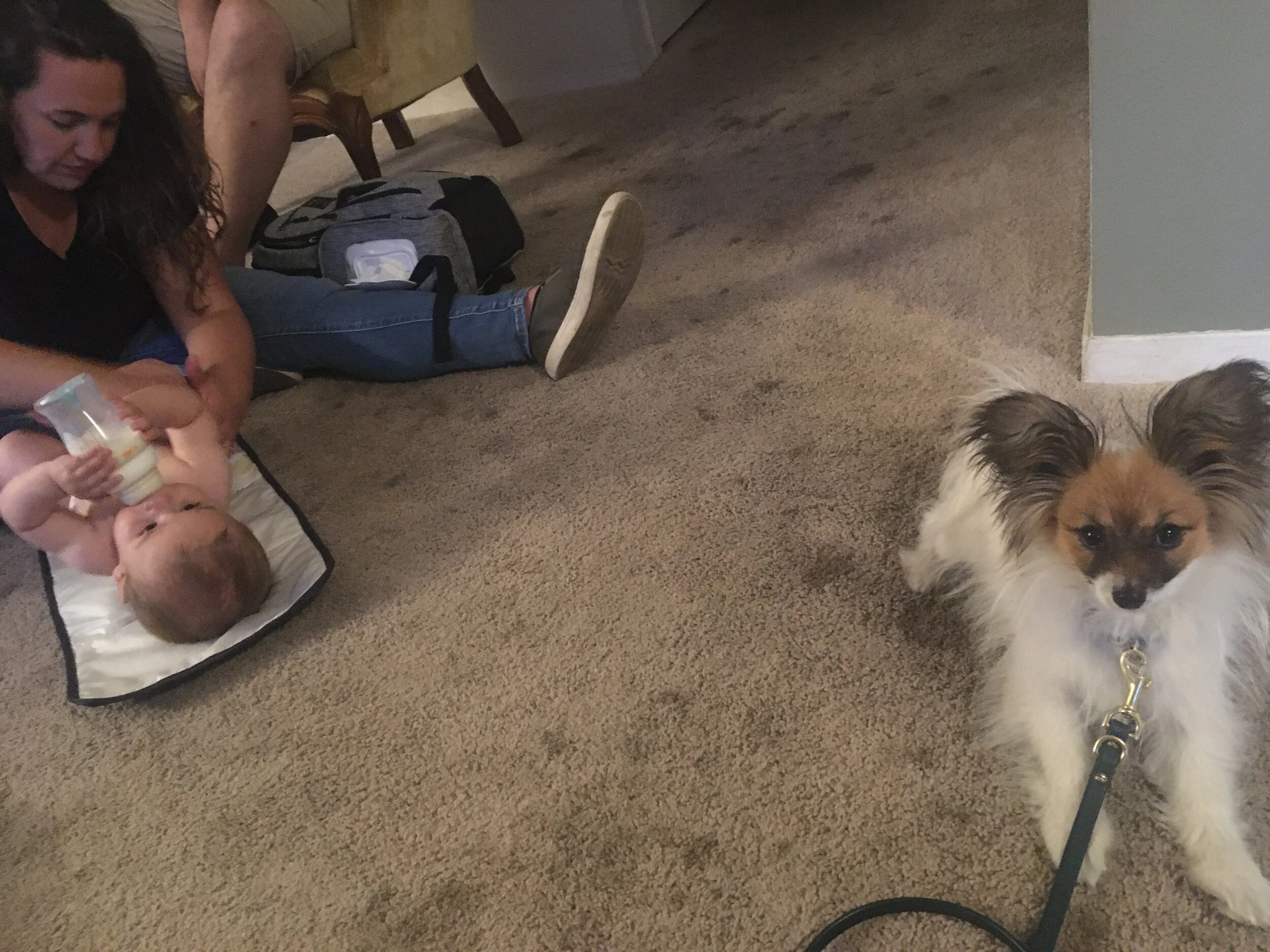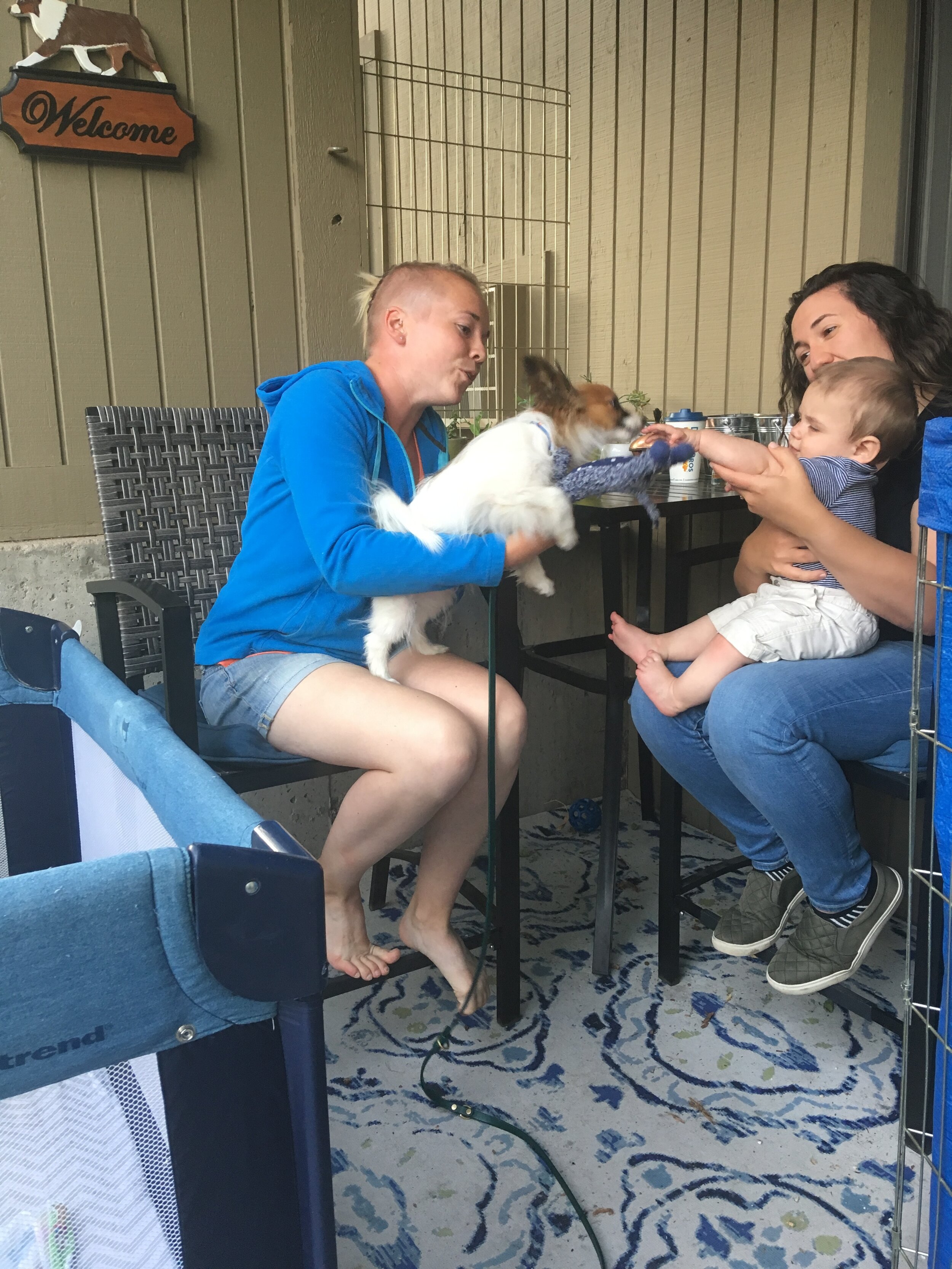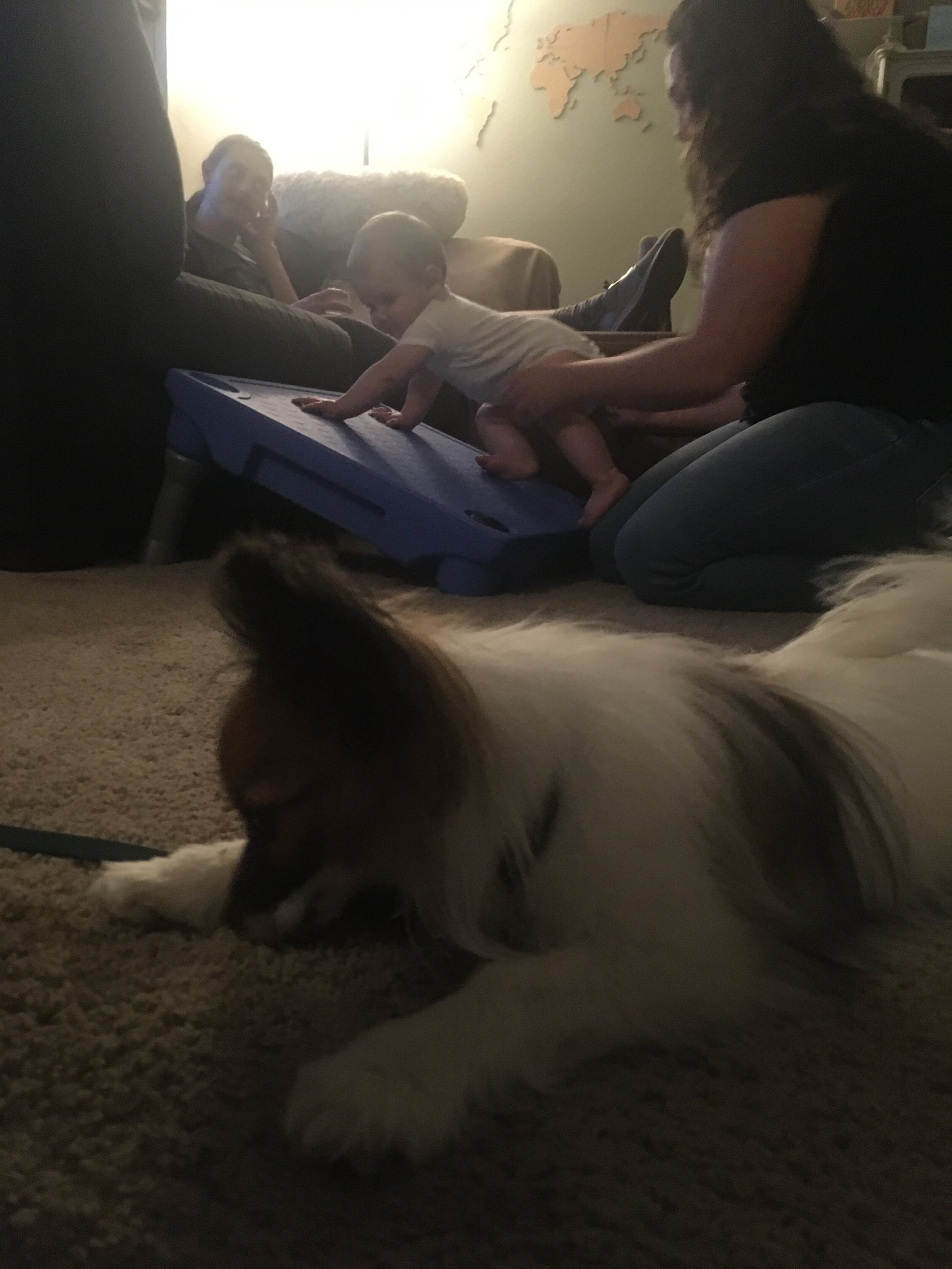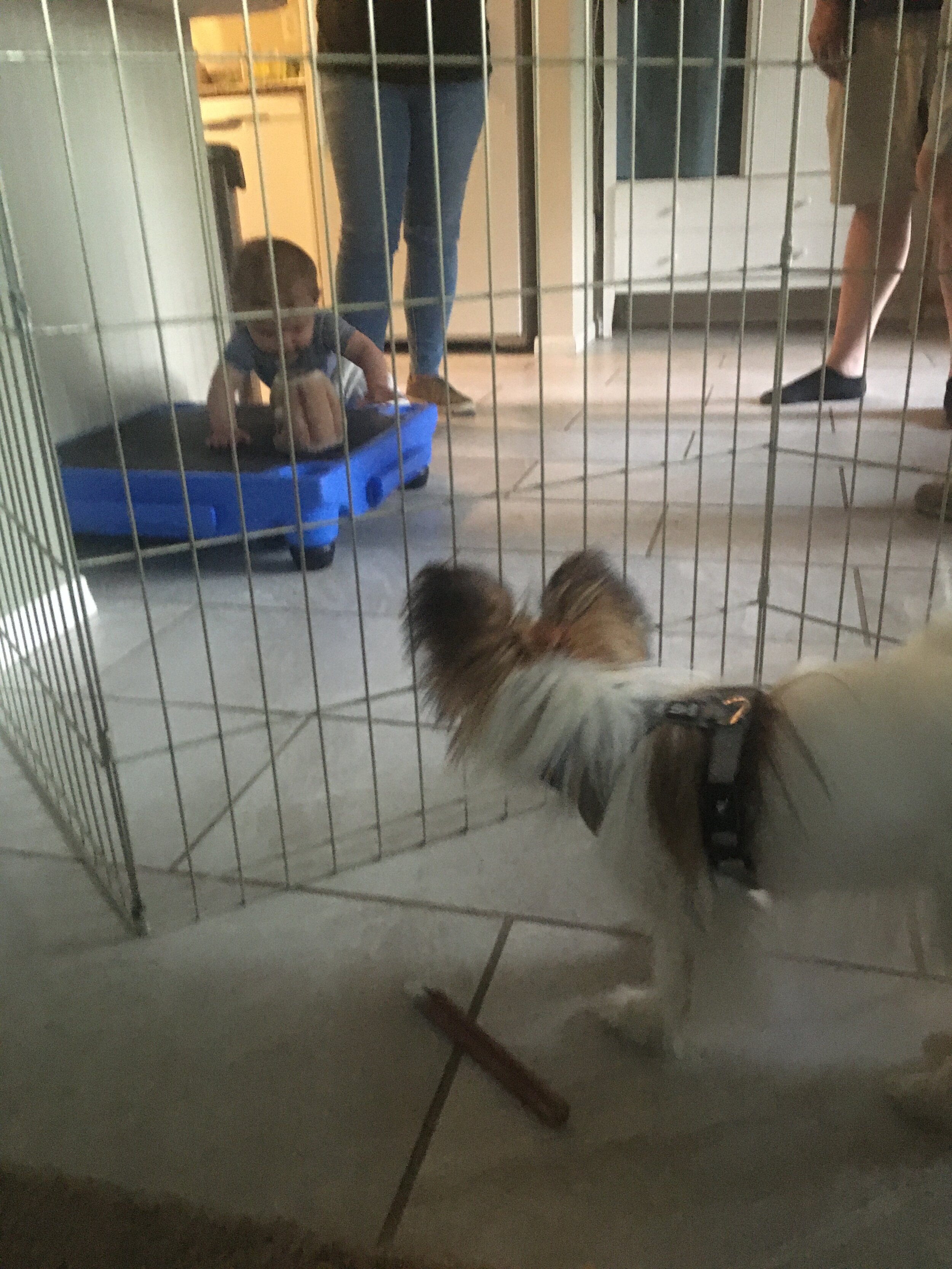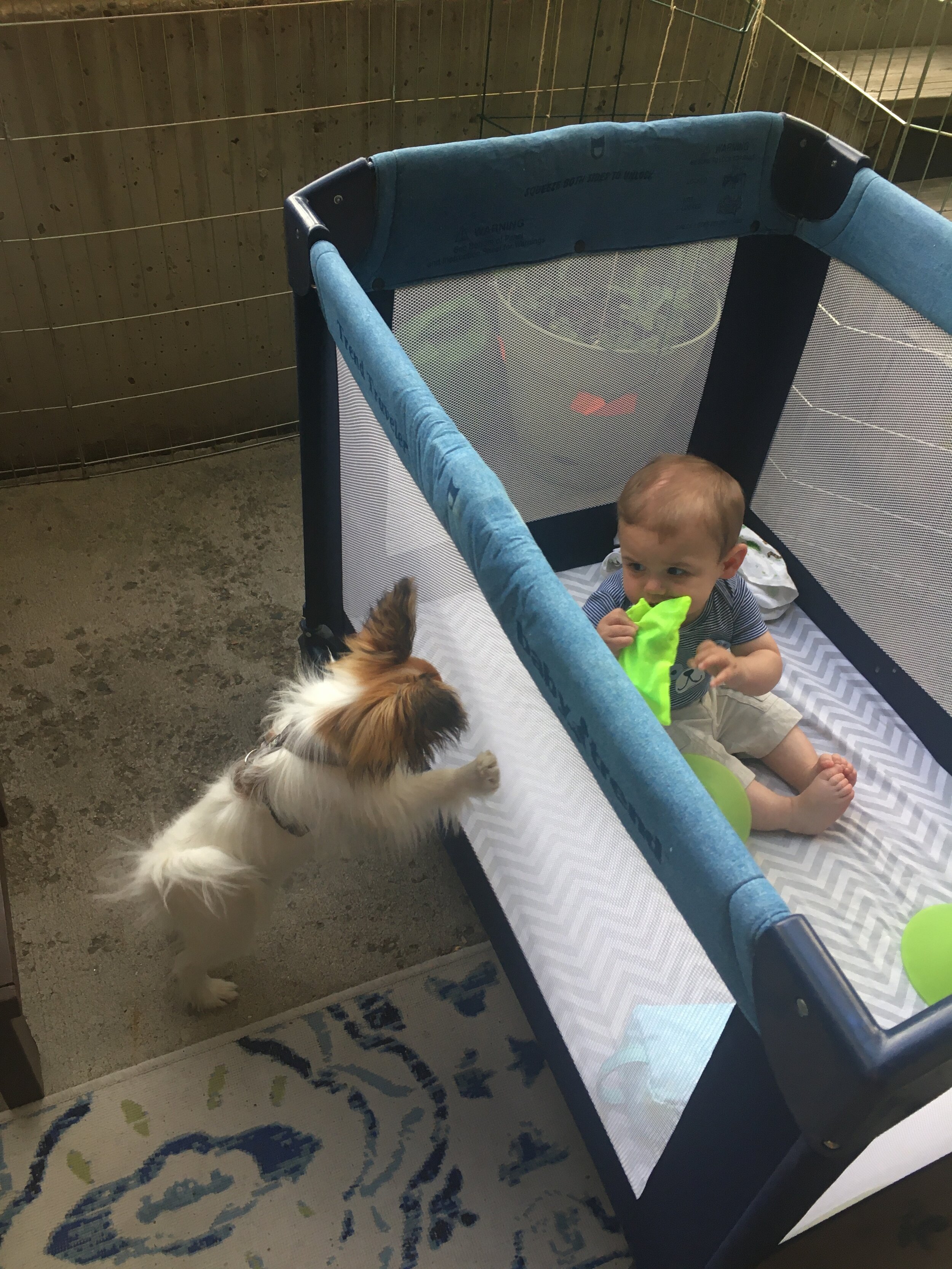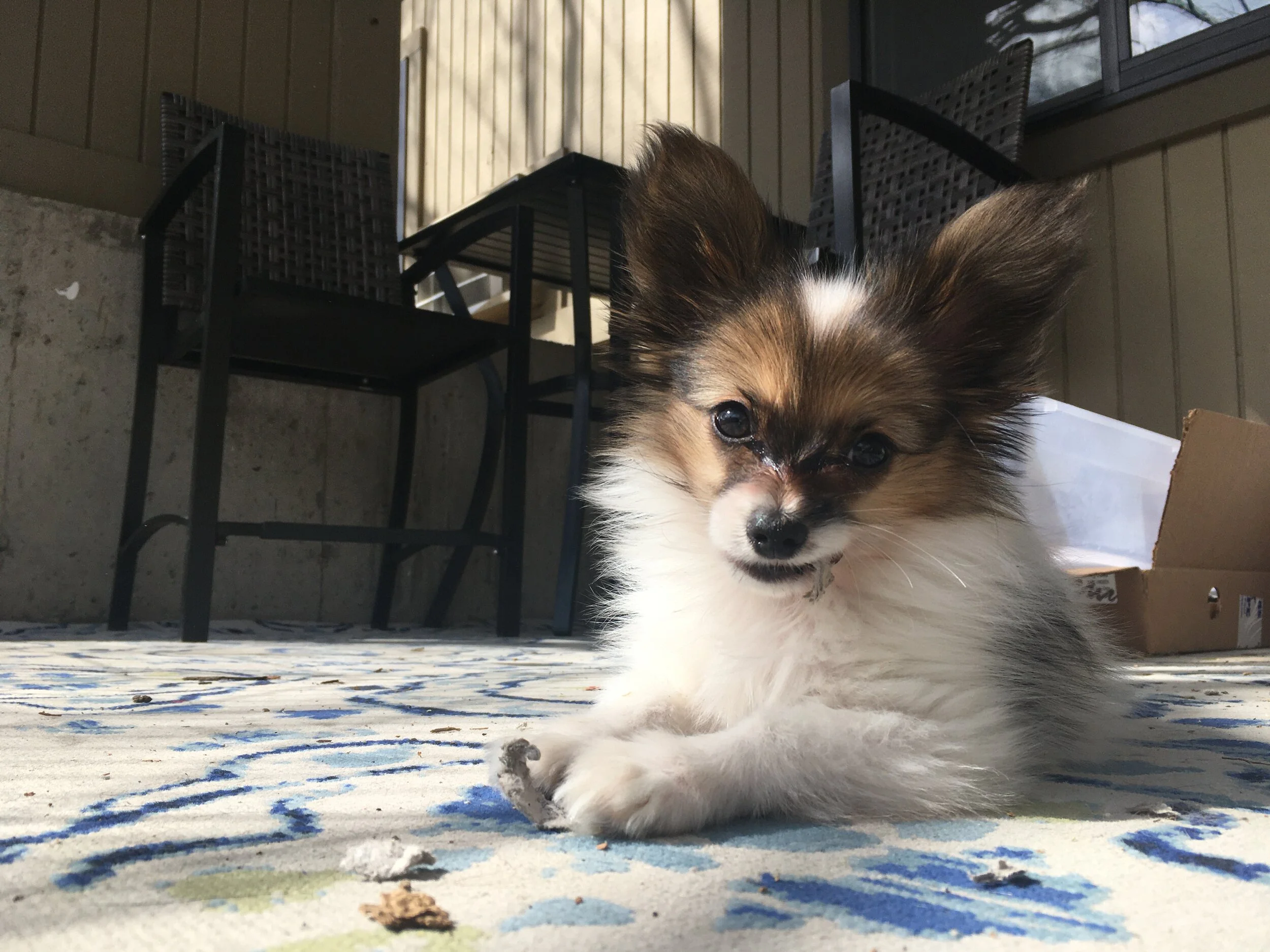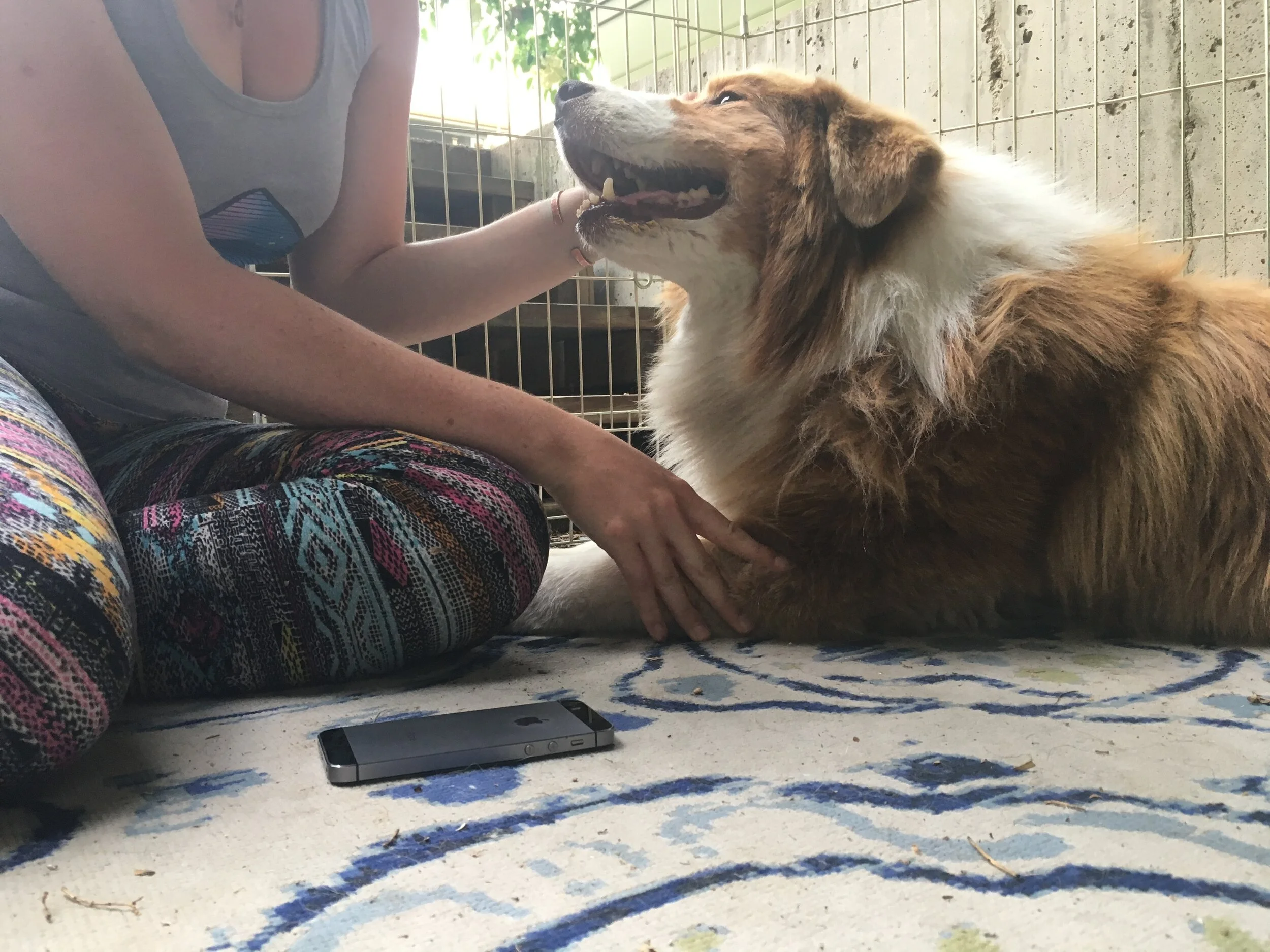Building off of our Small Dogs Need Training Too blog from a few weeks ago, today we’re going to talk about how to teach your small dog or puppy to feel comfortable when you pick them up! This is applicable to dogs of all sizes, but especially important for small dogs who will likely have to experience being picked up more frequently throughout their life.
Here are a few reasons that we might need to pick up our small dog or puppy:
Safety – something dangerous is coming and we need to get them to safety
Hot surface – boosting puppy across asphalt that might burn their paws
Over obstacles – up and down stairs, over a fallen log on a hiking trail
When we are raising a puppy, we also usually carry them more frequently to get them to potty areas on time, to avoid contact with outside surfaces prior to vaccination, and because they just can’t walk as far as an older dog. At first, most pups tolerate this carrying behavior pretty well, but it’s not uncommon for puppies to get to a point where being carried is not as comfortable or pleasant as it used to be! This is when you might see unwanted behaviors emerging like squirming to get down, whining, biting at your fingers, or growling – your puppy is using these behaviors to tell you that they don’t like what you are doing! This change in tolerance to being picked up can happen to some extent as part of a pup’s normal physical development (i.e getting bigger makes being picked up less comfortable), but often it is also a result of us over-using picking up or not teaching the puppy how to feel calm and confident about being picked up.
The good news is that there are a quite a few things that you can do with your puppy or older small dog to help them learn a calm picking up behavior.
1. Limit Use: Let your puppy walk as much as possible, and use picking up sparingly and only as-needed. Yes, it can be very convenient to carry a pup around to hurry things up, but the more we do it, the more withdrawals we are making from this behavior bank account. Try to save picking your puppy up for necessary situations only (like going up and down stairs) and avoid using this tactic at other times. It is also important to avoid picking your puppy up as a removal from an exciting situation, as this can really add negative emotions about being picked up. It’s so easy to see our puppy getting into trouble (like chewing on something inappropriately) and scoop them up to redirect, but this can be extra frustrating for our pups. Instead, try redirecting them in a different way that allows them to keep all four feet on the ground!
2. Use a Cue: Make sure the puppy knows you are about to pick them up ahead of time by adding a cue! I use the word “Boost” for Jamie. When I started conditioning this word, I would give it as I reached down for him, just a split second before actually picking him up. At the beginning, I always followed each cued pick up with a reward (see #3!). Now, a few months later, I give it the verbal cue a bit further in advance (1-2 full seconds) and wait for his consent (see #5).
3. Keep it Pleasant: We want our small pups to think getting picked up is a great thing! Condition pleasant things for calm in your arms. I follow “Boost” with a treat, and rehearse with my puppy the short sequence of “Boost” —> pick up —> treat —> release back to the floor —> repeat. We want the puppy to know that getting picked up doesn’t always mean a long carry or squeeze in your arms, but sometimes they get to go right back to what they were doing before. It’s also important to make sure that we aren’t startling our dogs when we scoop them up, as this can be very unpleasant! So using a cue to alert your pup to what is happening is tied into this point as well.
4. Calm Gets Down: We can teach our pups that being calm in our arms actually gets them out of our arms! This goes back to the keeping it short and sweet intervals from #3 - if you pick up your puppy and they are calm for a few seconds, put them down. Repeat! When they are still and relaxed, they get to go down. Now, we also have to keep in mind that if a puppy is really struggling to get out of your arms, not much good is served by forcing them to stay in your arms until they settle down. This will likely only exacerbate the situation. Try to notice calm behaviors to reinforce within the short intervals of time that our pups can handle, and if they are always getting to a struggling, biting mode then we are pushing things too far!
5. Work Towards Voluntary Participation: Your dog can learn to tell you “Yes, I’m ready to be picked up!” When I first started working on conditioning pick up skills with Jamie, I didn’t really wait for his permission to pick him up per-se, but I also didn’t pick him up if he was actively trying to avoid it. If your pup exhibits finger biting or active avoidance (walking/running away) as soon as you reach for him, we have a bit of other conditioning and baby steps we need to do first in order to build back up to picking him up. But as we are seeing a good foundation being built where our puppies are having pleasant experiences when they are being picked up, the next layer that I like to add is getting my puppy to volunteer to be picked up. At first this looked like Jamie giving a little weight shift up and into my hand as I placed it under his stomach. I’d say “Boost” and because he knew what was coming, he’d do a little rise up off the ground (really slight at first, almost like he was going up on tip-toes), and then I would pick him up. Once I started seeing this weight shift consistently, I started waiting to get this little bit of consent before lifting him. If I said “Boost,” reached down to pick him up, and he didn’t offer weight shift, I just waited in that position. Usually he would offer the weight shift within a few seconds, and started learning through this that he had control over the situation - I wouldn’t pick him up if I didn’t get his buy-in. Now that weight shift has morphed into a full launch-into-arms behavior, so most of the time he is participating actively in getting picked up instead of getting scooped. This control goes a long way to building a resilient behavior that the dog will want to participate in. This isn’t something to expect overnight (Jamie and I have been working on this for about 5 months now), but start with steps 1-4 above and then move to this when you are ready!
Jamie demonstrating a voluntary boost behavior with Charlie.
Troubleshooting
What if your puppy growls on one occasion when you pick them up? What do you do?
If it’s a one-off event or the first time it’s happened, don’t panic. Put your puppy down, and take stock of your environment. Was something different about this picture than previous times you have picked your puppy up (i.e. perhaps a bone resource you were pulling your puppy away from, or perhaps they had just woken up from a nap)? The more details you can collect and observe, the more information you will have to develop some training plan options for moving forward.
The other thing I always check if I have a dog exhibit a one-off growling incident in response to a physical interaction is whether there is any pain or discomfort that I wasn’t aware of. Sometimes our pups might be sore from playing rough with a friend, or maybe they have a burr stuck in their armpit that caused a pinch. Rule out the potential influence of pain before proceeding to any significant behavior modification plan.
Next, make a plan to review some picking up confidence! Go back a few levels in difficulty (i.e. start with just reaching towards your puppy) and make it positive and fun! Even if the incident was a one-off expression of discomfort for some reason, it’s always good to go back and review and build up that picking up behavior bank account.
What if your puppy or dog always growls when you pick them up?
Time to avoid picking them up at all costs for now, and work on some easier steps (like just reaching towards your puppy = treat) for the time being. A dog trainer would be a great asset to your team to help you create a step-by-step conditioning plan to help your puppy feel more comfortable with this routine!
What if your puppy or dog’s behavior towards you when you try to pick them up is pretty severe, resulting in attempted or successful bite towards you or a family member?
It’s time to enlist a behavior professional to help you create a step-by-step plan to modify this behavior sequence. In the meantime, avoid picking up your dog at all costs, as this will likely just continue to make this situation worse.


